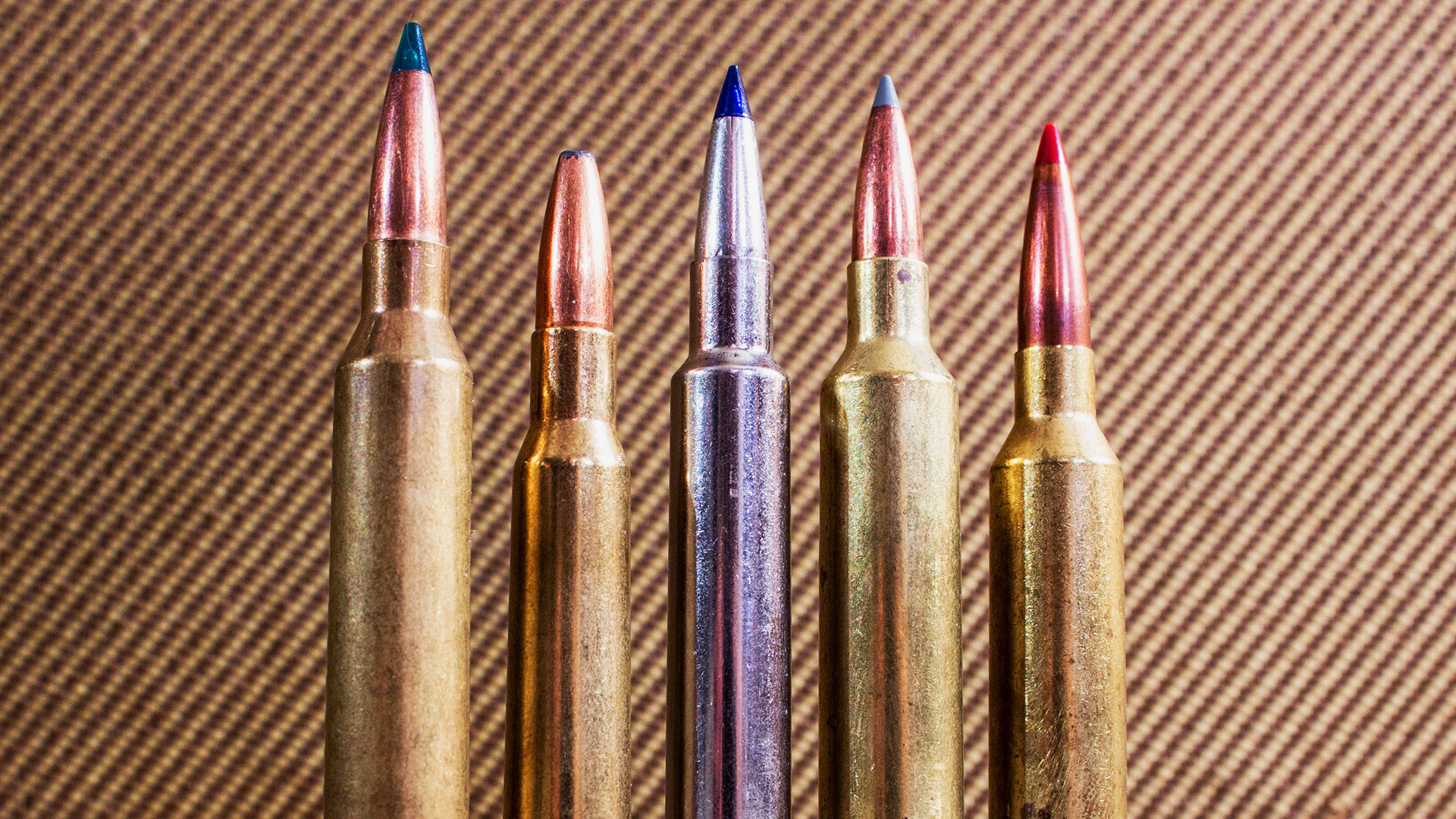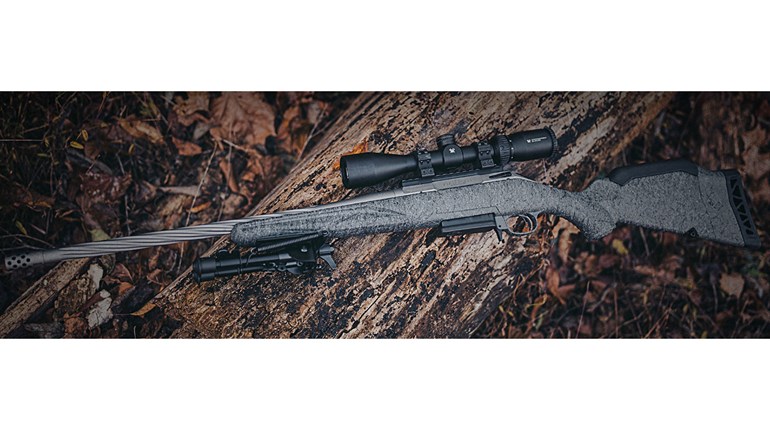
It’s no secret that the 7mm bore diameter and its cartridges have been consistently performing in the hunting field, at the target range and on the battlefield for well over a century. While it may have lived in the shadow of the .30-caliber hunting cartridges here in the United States, there has never been a time where the 7mms haven’t been a popular choice globally, especially across Europe, Africa and Australia. Of late, the popularity of the 7mm-caliber cartridges has been steadily on the rise, to the point where some say it may exceed America’s favorite son, the .30 caliber. For the hunters, there are plenty of choices in 7mm which will serve as an all-around, big-game hunting choice, save for the true heavyweights. Here are my top five choices.

1. 7mm Remington Magnum
Released in 1962, Remington’s 7mm Magnum shared many of the same design features that the trio of Winchester magnum cartridges had in the decade prior. They are all based on a belted Holland & Holland case, shortened to roughly 2½ inches to fit in a long-action receiver. Ironically, it closely resembles the .275 Holland & Holland Magnum released a half-century prior, the same year the more famous .375 H&H Magnum came to the limelight. Remington’s Seven Mag will push a 160-grain bullet to nearly 3000 fps, and though some may consider the cartridge overbore, it remains a very popular choice among hunters. It can take advantage of the majority of the 7mm projectiles, and despite the magnum moniker, it isn’t terrible on the shoulder, while handling the most common game species around the globe. It uses the H&H belt for headspacing, yet has the ability to deliver fantastic accuracy. In light of the more advanced, modern developments, the 7mm Remington Magnum still hangs on as a very popular choice. Those hunters who have an accurate 7mm Remington Magnum in the safe usually don’t look to much else in that power range.

2. 7mm PRC
Hornady’s line of Precision Rifle Cartridges (PRC) have really turned some heads, and though the 6.5 PRC and 300 PRC are solid designs, I feel the 7mm PRC to be the best balanced of the lot. Based on the beltless .375 Ruger case, the 7mm PRC shares the same cartridge overall length as the .30-06 Springfield and 7mm Remington Magnum (at 3.34 inches) yet the case length is only 2.28 inches long. This allows for the use of the long, sleek bullets with the highest ballistic coefficients (BC) to be employed within the restraints of the long-action magazine. It does offer slightly better muzzle velocities than those of the 7mm Remington Magnum, but it is with the long-range trajectory and wind deflection values of the high-BC bullets used at longer ranges that bring the benefits of the 7mm PRC to light. Yes, it uses a faster twist rate (1:8”) to properly stabilize the longer bullets, and is throated specifically for those designs, and yes, it probably won’t show much advantage over the 7mm Remington Magnum inside of 300 yards, but for the hunter who wants a highly flexible cartridge capable of not only taking any and all game animals which can be handled by a 7mm bullet, but one that will shine at the target range, look no further than the 7mm PRC.

3. .280 Ackley Improved
Remington legitimized the 7mm-’06 wildcats in 1957 with the release of the .280 Remington. Though a good design unto itself, it has to walk in the shadows of the .30-06 Springfield and the .270 Winchester which had a considerable head start. Famous gunsmith and wildcatter Parker Otto Ackley gave his treatment to the .280 Remington, developing what I feel to be the best of his efforts: the .280 Ackley Improved. Removing most of the body taper and using a steep 40-degree shoulder for headspacing (and better chamber concentricity), the .280 Ackley Improved can generate muzzle velocities very close to those of the 7mm Remington Magnum while taking up less room in the magazine due to a smaller body diameter. For the hunter, a proper rifle chambered in .280 AI might just be the most efficient of the 7mm cartridges, giving plenty of horsepower and a flat trajectory, while working well in windy conditions. Factory ammunition is available from a number of reputable sources, namely Federal, Nosler and Hornady. Be careful with this one, it’s addicting. I took it with me to Namibia and we had a great time. It might be my favorite of the 7mm cartridges.

4. 7x57mm Mauser/.275 Rigby
I’m sure you’ve been waiting for this one, as the 7x57mm Mauser has been satisfying shooters and hunters since 1892. Still highly popular in Europe, as well as across Africa, the 7x57 continues to put venison of all sorts in the freezer each year. It was the inspiration—in a roundabout fashion—for our own .30-06 Springfield, and would go on to father the .257 Roberts and 244/6mm Remington cartridges. Renamed by the British firm of John Rigby & Company as the .275 Rigby, the cartridge saw much adventure in the early 20th century across the British holdings in both Africa and India, with some famous hunters—namely W.D.M. Bell—using it for game animals as large as the African elephant. While I would seriously reconsider the wisdom of Bell’s choice, I have used the 7x57mm for feral hogs and whitetail deer, and love the ease of shooting—recoil is very low compared to the faster magnums—and the accuracy. While it might not be the first thought when contemplating 500-yard shots across canyons, a good 7x57mm Mauser topped with a good bullet is extremely effective at common hunting ranges. Want a cartridge for a youngster learning to accurately and effectively place shots on big game? The 7x57mm with lighter bullets is surprisingly pleasant at the bench, and that cartridge will grow with the young hunter. I like bullets of 150 to 175 grains in this cartridge, at a moderate velocity, as have a good number of hunters throughout history; terminal ballistics are excellent and meat damage is minimal. With a premium softpoint, the 7x57mm Mauser is even more versatile than it has ever been. There are a ton of quality Mauser-action rifles still out there, as well as modern designs chambered for the venerable cartridge, and if you spend the majority of your time inside the 300-yard mark, there really isn’t much the cartridge can’t do.

Oh, I’m going to cheat here, and include the 7mm-08 Remington in the same category, as their performance is so close that no game animal on earth would ever tell the difference. If you like a light, short-action rifle, the 7mm-08 is too often overlooked these days.

5. 28 Nosler
Of all the Nosler cartridges—including the 26, 27, 30 and 33—I feel the 28 offers the best balance of speed, bullet weight and user-friendliness. Designed to fit in a long-action receiver, the 28 Nosler will launch a 160-grain bullet to a muzzle velocity of 3300 fps, so if speed is your thing, this might be your baby. Loosely based on the .404 Jeffery case, the 28 Nosler surely delivers magnum performance without the belt of the H&H case; this means there are no issues with case stretching above the belt, and the 35-degree shoulder used for headspacing therefore giving excellent chamber concentricity. This level of speed does come at a price, and that is chiefly recoil, followed by report. Most rifles chambered for the 28 Nosler will employ a muzzle brake to tame the recoil, further enhancing the report; be sure and wear ear protection as often as you can, and warn others before you pull the trigger—your guide or hunting buddy will thank you. In addition to Nosler, the 28 Nosler is loaded by Federal, Hornady, Browning and Weatherby, so ammunition should pose no problem at all.




































